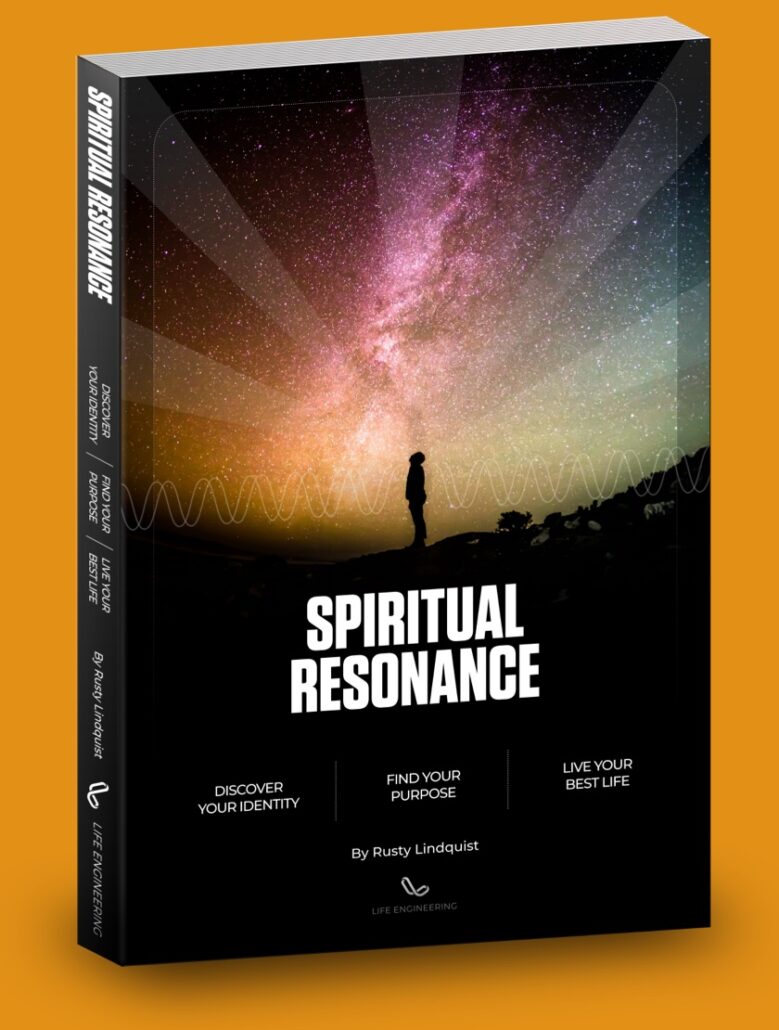Free Course: Alignment Staying on Course Free Course: Alignment From our 16 Elements series, and a part of the Act Pillar, Alignment …
HOW GREAT LEADERS INSPIRE ACTION – THE GOLDEN CIRCLE
articles
The following TED talk, given by Simon Sinek, describes how it is that great leaders inspire action—why some people are able to achieve things when others are not. He explains the brilliant, biologically-based “Golden Circle,” a new way of looking at how people approach what they do. He also discusses the Law of Diffusion of Innovation and weaves it all together with several brilliantly told examples from Apple, the Wright Brothers, and Martin Luther King, Jr.
Here is the video, with my highest recommendations (it’ll change the way you look at what you do). Beneath that, the “rough” written transcript.
How do you explain why some people are able to achieve things that seem impossible?
How is it that some companies, like Apple, year after year, always seem to lead innovation? Why is it that Martin Luther King led the civil rights movement? Why is it that the Wright Brothers were the ones that discovered controlled, powered man flight when others were more qualified and better funded?
A few years ago I discovered something that changed my life, a pattern that I found in all the great leaders (individuals and companies). They all think in the same way, and it’s the opposite of everybody else.
It’s probably the world’s simplest idea (all I did was codify it). I call it the “Golden Circle.”
“How” in the center, surrounded by “Why,” surrounded by a larger circle, “What.”
It explains why some leaders are able to inspire where others aren’t.
Everybody knows “what” they do 100%. Some know how they do it. But very very few people or organizations know WHY they do it.
And I don’t mean to make a profit, that’s the result. It’s the “why”: why do you do it, why you get out of bed in the morning, and why should people care.
Inspired organizations and people all think, act, and communicate from the inside out.
People don’t buy what you do, they buy why you do it.
The Why, How, What model is actually grounded in biology (not psychology).
If you were to look at a cross section of the brain from top down, you’d see that it corresponds perfectly to the golden circle.
Starting at the top is our “newest” (evolutionary) brain—our homo sapien brain, called our neocortex. It’s our What; it’s responsible for all our rational, analytical thought and language.
The middle two sections make up our limbic brains, which are responsible for feelings, trust, and loyalty, as well as all human behavior and decision making. It has no capacity for language.
In other words, when we communicate from the outside in, yes, people can understand vast amounts of complicated information, features, benefits, facts and figures, it just doesn’t drive behavior.
When we communicate from the inside out, we’re talking directly to the part of the brain that controls behavior, and then we allow people to rationalize it with the tangible things we say and do.
This is where gut decisions come from. It’s why you can give someone all the facts and figures and they’ll say that they know what all the facts and the details say, but it just doesn’t ‘feel’ right.
Why would they use that verb?
Because the part of the brain that controls decision making doesn’t control language.
Sometimes we say we’re leading with our heart or our soul. That’s all happening in your limbic brain.
But if you don’t know why you do what you do, then how will you ever get someone to buy into it—to be loyal or want to be a part of what it is that you do.
After all, the goal is not just to sell to people who need what you have, the goal is to sell to people who believe what you believe. The goal is not just to hire people who need a job, but who believe what you believe.
If you hire people who just need a job, they’ll work for your money. But if you hire people that believe what you believe, they’ll work for you with blood and sweat and tears.
There’s no better example than with the Wright Brothers.
Most people don’t know about Samuel Pierpont Langley. He had what we assume to be the recipe for success.
When you ask why people fail, they always give you some permutation of the same three things.
- Undercapitalized
- The wrong people
- Unfavorable market conditions
Langley was given $50K by the War department to figure out this flying machine. He held seat at Harvard and worked at the Smithsonian. He was extremely well connected. He had access to the greatest funds and the greatest minds. He hired the greatest minds available, and the market conditions were fantastic. The New York Times followed him everywhere; everyone was rooting for him. But we’ve never heard of Samuel Pierpont Langley.
A few hundred miles away in Dayton, Ohio were Orville and Wilbur Wright, who had none of this “recipe for success.” They paid for it all from the proceeds of their humble bicycle shop.
Not a single person on the Wright Brothers team had a college education, not even Orville or Wilbur. And the New York Times ignored them.
But they were driven by a cause, by a purpose, by a belief. They believed that if they could figure out this flying machine, it would change the course of the world.
Samuel Peirpont Langley was different. He wanted to be rich and he wanted to be famous.
He was in pursuit of the result, of the riches.
In the end, the people who believed in the dream worked with blood and sweat and tears, the others just for the paycheck.
Every time the Wright brothers would go out, they would have to take five sets of parts, because that’s how many times they would crash before they came home for supper.
Eventually on December 17, 1903, they took flight. And no one was there to even experience it. We found out later.
To prove that Langley wasn’t in it for the right thing, the day he found out that they had beat him to it, he quit. He could have said “that’s an amazing discovery, and I will improve upon it.”
But he wasn’t first, he didn’t get rich, he didn’t get famous, and so he quit.
People don’t buy what you do. They buy why you do it. If you talk about what you believe, you will attract those who believe what you believe.
Microsoft sells the “What” and sometimes the “How,” but Apple sells the “Why.”
Which is important because of the “law of diffusion of innovation.”
The law of diffusion of innovation shows that the adoption curve (a typical bell curve) can be segmented out into the following sections.
Of all our population:
- 2.5% innovators
- 13.5% early adopters
- 34% early majority
- 34% late majority
- 16% laggards
We all sit at various places at various times along this scale.
If you want mass market appeal, mass market success or acceptance of an idea (the two 34% sides), you cannot have it until you have achieve this tipping point, between 15% and 18% market penetration.
I love to ask businesses, “What is your conversion?” and they respond proudly, “10%.” Well you can trip over 10%. There’s always 10% who will just “get it”—in fact, that’s how we describe them.
It’s the second segment—the 13%—that matters, as Jeffery Moore describes in Crossing the Chasm.
The early majority will not try something until somebody else tries it first.
These early guys are comfortable doing that, living intuitively, based on what they BELIEVE about the world (the Why), not just what’s available (the What).
These are the people who stand in line for six hours to buy an iPhone.
People don’t buy what you do, they buy why you do it. In fact, what you do simply proves what you believe (belief pyramid, the reason that our works—the What—is the clearest manifestation of our strongest beliefs).
People will do the things that prove what they believe. They wanted to show that they would be first, because that spoke to a value that they believed about themselves. People don’t buy what you do, they buy why you do it.
First, I’ll share a famous failure of the law of diffusion of innovation.
TiVo. From the time it came out until the present day, they were the single highest-quality product on the market, hands down. We said before that the recipe for success is the right money, the right people, and the right market conditions. They were the first, they were the best, they were extremely well funded, the market conditions were perfect, “TiVo” became a verb. But they’re a commercial failure. They’ve never made money. And when they went IPO, their stock was about $30-40 and then plummeted. Since then it’s never been above $10, usually below $6.
Tivo’s marketing strategy was to tell people what they have: “We let you pause live TV, rewind live TV, and we watch your viewing habits and adjust without you having to do anything.” It was all about What. And market skeptics said we’re not interested.
What if they would have said, “If you’re the type of person that likes to have total control over your life, we have a product for you!”?
People don’t buy what you do, they buy why you do it. What you do is simply the proof of what you believe.
Now, a successful example of the law of diffusion of innovation.
In summer of 1963, 250K people showed up to hear Dr. King speak. There were no invitations, there was no website to check the date. He wasn’t the only great orator, he wasn’t the only person to have these ideas, and some of his ideas were even bad. But what he did was to go around and simply talk about what he believed. “I believe, I believe, I believe,” he told people.
And people who believed what he believed took his cause and told more people, to the point where 250k showed up on the right day at the right time to hear him speak.
How many people showed up for him? Zero. They showed up for themselves. It’s what they believed about America that got them to drive eight hours on a bus to stand in the sun in Washington, DC in the middle of August. It’s what they believed. It wasn’t black vs. white. 25% audience were white.
He believed that there were two kinds of laws in this world: those that are made by a higher power, and those that are made by man. And it’s not until those that are made by man are consistent with the laws that are made by the higher power that we will live in a just world. It just so happened that the civil rights movement was the perfect thing to help him bring his cause to life. He gave the “I have a dream” speech, not the “I have a plan” speech.
Listen to politicians now with their 12-point plans, they’re not inspiring anybody.
There are leaders, and there are those who lead.
Leaders are those who hold a position of power or authority. But those who lead are those who inspire us. Whether individuals or organizations, we follow those who lead, not because we have to, but because we want to. Not for them, but for ourselves.
And it’s those who start with “Why” that have the ability to inspire those around them or find others to inspire them.
Share this
with someone who might need it
keep reading
The turkey effect How to learn who you are and live your best life raising turkeys People often wonder “who am I?”; …
HOT HANDS HOW identity POWERS PEAK PERSONAL PERFORMANCE HOT HANDS There’s a well-known phenomenon in sports called “Hot Hands.” It’s the idea …
Know Thyself The Key to Unlocking Your Full Potential Know thyself Nestled deeply on the slopes of Mount Parnassus in Greece is …
Employee satisfaction is closely tied to performance. When satisfaction levels rise, productivity, customer service, and profits tend to rise too. Employee turnover slows down and it becomes easier to recruit new talent. See how your team, leadership, and shareholders can benefit from a company culture that emphasizes employee satisfaction.
If you want your customers to be happy, you need to think about employee satisfaction. When employees like their workplaces, they are more effective at their jobs and provide better customer service. Learn more about the link between the employee and customer experience and how to measure employee satisfaction.








Responses